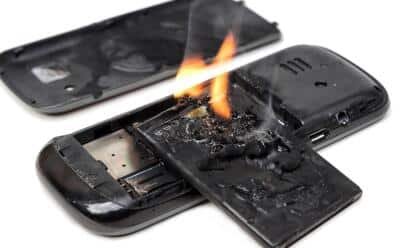Fire Suppression Method in Lithium Battery Storage System
The world is promoting the transition from fossil energy to renewable energy, and efficient energy storage systems are an essential part of it. Among them, energy storage systems based on lithium-ion batteries are the most prominent. Lithium-ion batteries are at the forefront of battery technology research and application because of their high energy density and long cycle life. It is precisely because of these advantages that lithium-ion batteries are rapidly replacing other types of batteries in many application scenarios. Examples of lithium-ion battery applications range from small personal electronic devices, such as smart phones and smart watches, to large-scale energy storage devices, such as electric vehicles, solar power plants and wind farms. Although lithium-ion batteries have many advantages, they have an inherent risk of thermal runaway, which may lead to the injection of harmful gases (flammable, toxic or explosive), cause fire and explosion. This article focuses on various fire fighting methods to suppress fires in lithium-ion battery energy storage systems.
Lithium batteries have to go through a stage of thermal runaway before they fail, fire or even explode. When the heat generated by the chemical exothermic reaction inside the lithium battery is not dissipated in time, so that the internal temperature of the battery reaches the damaged temperature of the battery diaphragm, it will cause the electrode to come into direct contact with the electrolyte, releasing a lot of heat and combustible gases in a short period of time, leading to a fire or explosion. Unlike traditional fires, the thermal runaway of lithium batteries causes the fire to be powered by an internal chemical reaction, which releases heat and can continue to burn without oxygen supply or visible flames. In addition, the electrical energy stored in the lithium-ion battery energy storage system and the dense arrangement of battery modules also pose a major challenge to suppressing fire.
The arrangement of the lithium-ion battery energy storage system is a key factor in promoting the uncontrolled spread of heat. As shown in Figure 3, a single lithium-ion battery cell is assembled into a battery module, the modules are stacked in the battery holder to become a battery cluster, and the last series of battery families form a battery system. Heat propagation may be caused by the combustion of heat generated inside the battery and the released gas. The main heat transfer route inside the battery module is through a single cell shell for heat conduction. The heat generated by a single cell fire may cause thermal runaway in adjacent batteries. For large lithium-ion battery energy storage systems, this phenomenon will spiral and cause the spread of thermal runaway, affecting the entire module or battery cluster, and ultimately the entire battery system.
Water-based automatic sprinkler system
Lithium battery fires are essentially caused by thermal runaway. Cooling is a key point in fire extinguishing methods. Due to the effective cooling characteristics of water, water-based automatic sprinkler systems are widely used in general commodity fire fighting. However, the effectiveness of water-based automatic sprinkler systems used in lithium-ion battery energy storage systems needs further research. At present, there is still a gap between the overall effectiveness of water-based fire extinguishing systems in suppressing large-scale fires in lithium-ion battery-based energy storage systems and laboratory data.
Disadvantages of Water-based automatic sprinkler system
1) The high conductivity of water may cause the battery to short circuit, causing additional fire risks
2) In order to prevent the spread of thermal runaway, a lot of water needs to be consumed to cool the battery below the critical temperature, resulting in a certain degree of waste of water resources.
3) The water used in the fire of lithium-ion batteries will increase the generation of exhaust gases and toxic gases such as CO, H2 and HF. Water can cause incomplete combustion of organic matter in lithium-ion batteries, resulting in toxic CO instead of CO2. When water is used, H2 is released without combustion, increasing its concentration, and water reacts with phosphorus pentazide to produce HF.
4) Due to the dense installation structure of the battery module, once the water is stopped and the cooling effect cannot be achieved, the inside of the battery may catch fire again.
Fine water mist fire extinguishing system
The fire extinguishing mechanism of fine water mist is mainly endothermic cooling, oxygen isolation chamber respiration, radiant heat blocking and wetting. When a fire occurs in the lithium battery, the fine water mist nozzle jets out instantly, acting directly on the surface of the flame, quickly achieving the effect of oxygen isolation chamber, thereby inhibiting the combustion of the flame. At the same time, the particle size of the fine water mist droplets is 1 000um, while the droplet size of the traditional sprinkler system is about 5 000um. The fine water mist is easily vaporized after being heated. This evaporation process will take away a lot of heat, thereby quickly cooling the fire area. In laboratory-scale lithium battery fires, the fine water mist fire extinguishing system showed excellent battery cooling and preventing reburning effects. The study found that adding surfactants and gels to the fine water mist system can also effectively reduce the amount of water required to extinguish the fire and cool the adjacent modules. Although the fine water mist fire extinguishing system has some known shortcomings such as harmful gases that will be produced during use, the ideal fire extinguishing effect in laboratory-level fires has prompted more and more lithium battery manufacturers to choose fine water mist fire extinguishing systems.
Inert gas fire extinguishing system
Due to the low conductivity of the inert gas, it is all volatile after extinguishing the fire as a fire extinguishing agent, has no residues, and has no pollution to the environment, making it widely used in electrical appliances. Electronic component units and other live operations and other occasions. The study found that the non-combustible and unsupported combustion characteristics of inert gases such as N, CO, and He have an inhibitory effect on fires caused by the thermal runaway of lithium-ion batteries. When a fire occurs in the ion battery energy storage system, the exhaust gas or smoke detection system is activated. The use of inert gas in a closed environment can quickly reduce the concentration of O2, thereby blocking the contact between the burner and O2, so as to achieve the purpose of room respiration, in order to suppress the fire from continuing to spread. The inert gas fire extinguishing system is different from the water-based system. The gas fire extinguishing agent can penetrate the lithium-ion battery fire at a deep level, but the cooling performance of the gas is poor, and it is usually unable to prevent the spread of heat.
Cleaner fire extinguishing system
Based on the cleaning agent system of halogenated hydrocarbons, the “green” fire extinguishing system is gradually being recognized and widely used by fire management departments in various countries. The fire extinguishing system of the fire extinguishing system can combine the physical and chemical reaction processes to quickly and effectively eliminate heat energy and prevent the occurrence of fire. The physical properties of clean fire extinguishing agents are manifested in their molecular vaporization stage, which can quickly cool the flame temperature, and release free radicals during the chemical reaction, which can ultimately prevent the chain reaction of combustion, and may be able to suppress the fire caused by the initial lithium-ion battery. There is a risk of hypoxia in the inert gas fire extinguishing system when it is used. The main disadvantage of halogenated hydrocarbon cleaners is that exposure to high temperatures may form secondary toxic and corrosive products, which will pose a threat to the lives and safety of firefighters.
Prev Article: How Your Lithium Batteries Come to You
Next Article: Why is Your Marine Lithium Battery Sooo Hot?—-Thermal Runaway



Leave A Comment